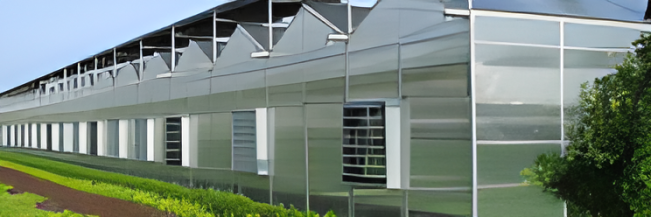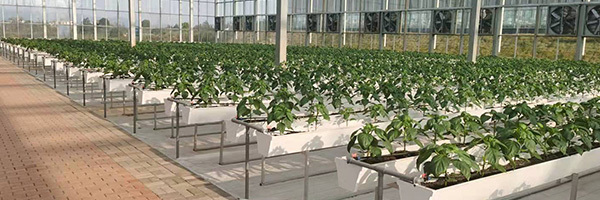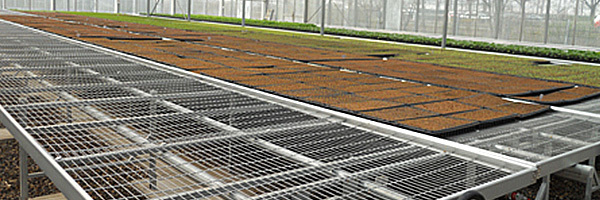-
-
Company Profile
-

Greenhouse Structures

-
Polycarbonate sheet greenhouse
-
Glass greenhouses
-
Multi-Span film greenhouse
-
Tunnel greenhouse
-
Sightseeing greenhouse
-
Double-film frame solar greenhouses
-
Glass and polycarbonate sheet greenhouses
-
Glass greenhouses structures suitable for planting
-
Glass Greenhouse for Scientific Research
View More -
-

-

Choosing the Right Glass Type for Your Greenhouse Roof: A Comprehensive Guide
Release time:
2025-10-24
Choosing the Right Glass Type for Your Greenhouse Roof: A Comprehensive Guide Table of Contents Introduction to Greenhouse Glass Types Importance of Choosing the Right Glass for Your Greenhouse Types of Glass for Greenhouse Roofs Tempered Glass Polycarbonate Sheets Acrylic Glass Low-E Glass Factors to Consider When

Choosing the Right Glass Type for Your Greenhouse Roof: A Comprehensive Guide
Table of Contents
- Introduction to Greenhouse Glass Types
- Importance of Choosing the Right Glass for Your Greenhouse
- Types of Glass for Greenhouse Roofs
- Factors to Consider When Choosing Glass for Your Greenhouse Roof
- Installation Tips for Greenhouse Glass Roofs
- Maintenance of Greenhouse Glass Roofs
- Conclusion: Making an Informed Decision
- FAQs About Greenhouse Glass Types
Introduction to Greenhouse Glass Types
When constructing or upgrading a greenhouse, one of the most critical decisions you will face is selecting the right type of glass for the roof. The glass you choose significantly impacts the **amount of light** your plants receive, as well as the overall **environmental conditions** within the greenhouse. In this guide, we will explore the various glass options available, their benefits, and essential considerations to help you make an informed decision that supports your horticultural goals.
Importance of Choosing the Right Glass for Your Greenhouse
Choosing the right glass type for your greenhouse roof is essential for several reasons:
1. **Light Quality**: The right glass allows optimal light transmission, crucial for photosynthesis and plant growth.
2. **Temperature Regulation**: Proper insulation helps maintain the ideal temperature within the greenhouse, protecting plants from extreme weather conditions.
3. **Durability**: Selecting durable glass ensures longevity and reduces the likelihood of breakage, thereby protecting your investment.
4. **Energy Efficiency**: Certain glass types can enhance energy efficiency, lowering heating and cooling costs over time.
Understanding these factors will help guide you in selecting the most suitable glass for your greenhouse roof.
Types of Glass for Greenhouse Roofs
There are several types of glass commonly used in greenhouse roofs, each with distinct characteristics and advantages.
Tempered Glass
Tempered glass is a popular choice for greenhouse roofs due to its strength and safety features. It is produced by heating the glass to high temperatures and then rapidly cooling it, resulting in a material that is four to five times stronger than standard glass. Its benefits include:
- **Safety**: When broken, tempered glass shatters into small, blunt pieces, reducing the risk of injury.
- **Light Transmission**: Provides excellent light clarity, essential for plant growth.
- **Durability**: Resistant to thermal stress, making it ideal for fluctuating temperatures.
Polycarbonate Sheets
Polycarbonate sheets are a lightweight and versatile option for greenhouse roofs. Made from a strong plastic polymer, they offer several advantages:
- **Impact Resistance**: Highly resistant to impact, making them less likely to break compared to glass.
- **UV Protection**: Many polycarbonate sheets come with built-in UV protection, shielding plants from harmful rays.
- **Insulation**: Available in double-walled designs, which enhance insulation and help maintain consistent temperatures.
Acrylic Glass
Acrylic glass, also known as plexiglass, is another alternative to traditional glass. While it is lighter and more flexible, it has its own set of benefits:
- **Lightweight**: Easier to handle and install due to its reduced weight.
- **Clarity**: Offers high light transmission, promoting healthy plant growth.
- **Weather Resistance**: Resistant to yellowing and environmental damage, ensuring longevity.
Low-E Glass
Low-emissivity (Low-E) glass features a special coating that reflects infrared and ultraviolet light while allowing visible light to pass through. This type of glass is designed to improve energy efficiency:
- **Energy Efficiency**: Helps regulate temperature by minimizing heat loss in colder months and blocking excessive heat in warmer months.
- **Plant Growth**: Allows adequate light transmission while maintaining a stable internal environment.
Factors to Consider When Choosing Glass for Your Greenhouse Roof
Selecting the right glass for your greenhouse roof involves evaluating multiple factors:
Light Transmission
Light transmission is critical for plant growth. Different glass types offer varying levels of light clarity. For instance, tempered glass provides excellent transmission, while polycarbonate sheets may have reduced clarity due to their structure. Evaluate the light needs of your specific plants to determine the best option.
Insulation Properties
Insulation is essential for maintaining a stable internal climate. Polycarbonate sheets with double walls offer superior insulation compared to standard glass. If your region experiences extreme temperatures, opt for glass types that enhance thermal performance.
Durability and Safety
Consider the climate conditions in your area when selecting glass. In regions prone to hail or severe weather, impact-resistant materials like polycarbonate may be preferable. Additionally, tempered glass is a safe choice due to its shatter-resistant properties.
Installation Tips for Greenhouse Glass Roofs
Proper installation is crucial for maximizing the benefits of your chosen glass type. Here are some tips to ensure a successful installation:
1. **Plan for Ventilation**: Incorporating vents in your greenhouse design helps regulate temperature and humidity levels.
2. **Use Proper Sealants**: Ensure that you use weather-resistant sealants to prevent leaks and maintain insulation.
3. **Follow Manufacturer Guidelines**: Always adhere to installation instructions provided by the glass manufacturer for optimal results.
Maintenance of Greenhouse Glass Roofs
Regular maintenance of your greenhouse glass roof will extend its lifespan and keep it functioning effectively. Here are some maintenance tips:
1. **Clean Regularly**: Use gentle cleaners and soft cloths to prevent scratches and maintain clarity.
2. **Inspect for Damage**: Regularly check for cracks or breaks and address any issues promptly to prevent further damage.
3. **Check Seals**: Inspect seals and weatherstripping periodically to ensure they are intact and functioning properly.
Conclusion: Making an Informed Decision
Choosing the right glass type for your greenhouse roof is paramount for creating a thriving environment for your plants. By understanding the various glass options available—such as tempered glass, polycarbonate sheets, acrylic glass, and Low-E glass—you can make an informed decision that aligns with your gardening aspirations. Consider factors such as light transmission, insulation properties, and durability to select the best option suited to your specific needs. Remember, investing time in selecting the right glass will pay off in the long run, enhancing both plant growth and greenhouse efficiency.
FAQs About Greenhouse Glass Types
1. What is the best type of glass for a greenhouse roof?
The best type of glass depends on your specific needs, but tempered glass and polycarbonate sheets are widely recognized for their durability and light transmission.
2. How long does greenhouse glass last?
With proper maintenance, greenhouse glass can last anywhere from 10 to 30 years, depending on the material used and environmental conditions.
3. Can I use regular glass for my greenhouse roof?
While regular glass can be used, it is not recommended due to its fragility and lack of insulation compared to specialized options like tempered or polycarbonate glass.
4. How can I improve insulation in my greenhouse?
Using double-walled polycarbonate sheets or Low-E glass can significantly improve insulation, helping to maintain a stable internal climate for your plants.
5. What maintenance is required for greenhouse glass roofs?
Regular cleaning and inspections for damage are essential. Ensure seals are intact and address any cracks or breaks promptly to extend the lifespan of your glass roof.Keyword:
Related News
Choosing the Right Glass Type for Your Greenhouse Roof: A Comprehensive Guide
Choosing the Right Glass Type for Your Greenhouse Roof: A Comprehensive Guide Table of Contents Introduction to Greenhouse Glass Types Importance of Choosing the Right Glass for Your Greenhouse Types of Glass for Greenhouse Roofs Tempered Glass Polycarbonate Sheets Acrylic Glass Low-E Glass Factors to Consider When
2025-10-24
Optimal Glass Greenhouse Structures for Effective Plant Cultivation
When considering glass greenhouse structures suitable for planting, several critical factors come into play. First and foremost, the choice of materials is paramount. Glass greenhouses are favored for their ability to provide maximum light transmission, which is essential for photosynthesis. Unlike plastic alternatives, glass allows for a more even distribution of sunlight, creating an ideal envir
2025-10-19
Maximizing Light and Space: The Design of Glass Greenhouses for Research
Maximizing Light and Space: The Design of Glass Greenhouses for Research Glass greenhouses have transformed research in various fields, from botany to climatology. The ability to control environmental conditions while maximizing natural light makes these structures essential for scientific studies and agricultural innovation. In this article, we will explore the design principles, materials, and
2025-10-14
The Benefits and Considerations of Glass Greenhouses in Architectural Design
--- Glass greenhouses have become increasingly popular in the field of architecture and construction, particularly within the niche of building materials. These structures serve as a unique intersection of functionality and aesthetic appeal, making them an attractive option for various applications, from residential gardens to commercial spaces. One of the primary benefits of a glass greenhouse is
2025-10-09
Enhancing Eco-Friendliness with Glass and Polycarbonate Greenhouses Table of Contents Introduction to Eco-Friendly Greenhouses Benefits of Glass and Polycarbonate Greenhouses Glass vs. Polycarbonate: Which is Better? Sustainability in Agricultural Practices Energy Efficiency in Greenhouses Environmental Impact of Greenhouses Best Practices for Eco-Friendly Greenhouse M
2025-10-04
Contact
Address: Hebei University of Technology Science and Technology Park, High tech Zone, Cangzhou City, Hebei Province
International Trade Office: Huashang Building, Yunhe District, Cangzhou City (500 meters east of Cangzhou West High speed Railway Station)
Tel:+86 15301369860

Online message
-







